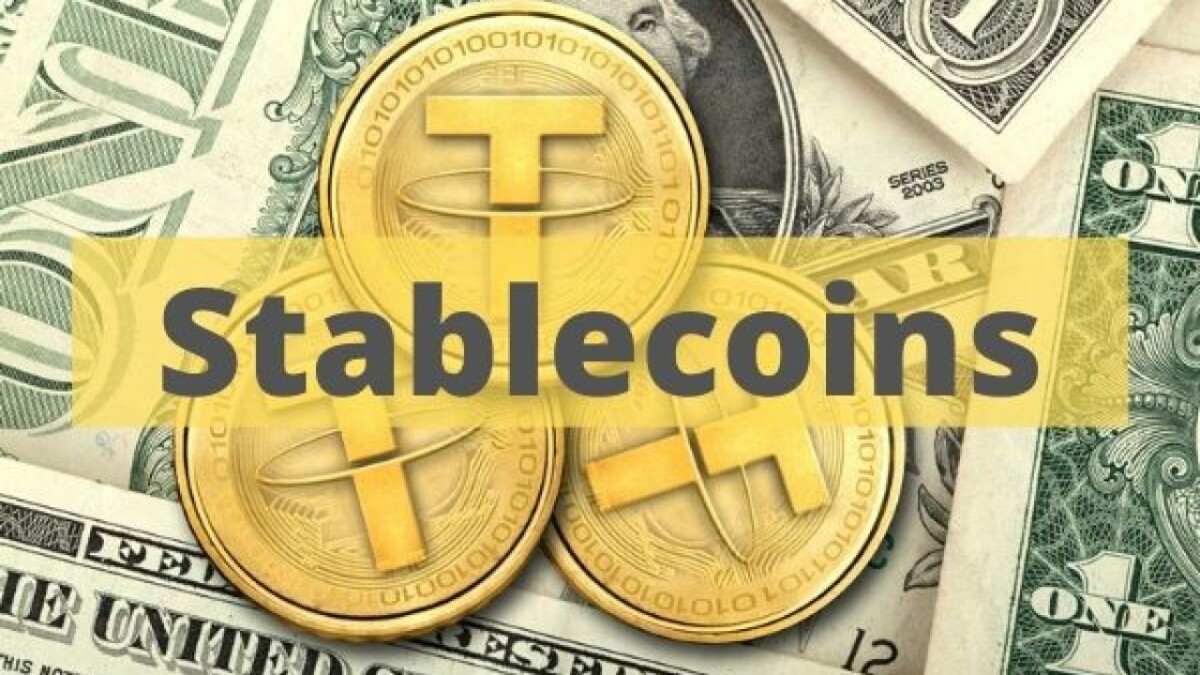StableCoin Adoption is Increasing.
By
Last Updated May 06, 2023
Customers and Society could benefit significantly from the adoption of new digital payment systems, such as increased efficiency, competitiveness, broader financial inclusion, and increased innovation. The acceptance of new forms of money will be determined by their desirability as a store of value and a means of payment. Stablecoins, for example, are a far cry from traditional currencies and bank savings.
While the advantages and disadvantages of stablecoins are debatable, their popularity is undeniable. Over $113 billion in coins have already been issued. What should be done about them, and who should be held accountable, is the question. Stablecoins may be a logical progression of the mix of public and private money on which we have previously relied.
According to the company's transparency balance web page, USDT's market capitalization is $69.67 billion as of October 12, 2021, and is subject to change based on market demand. At the time of writing, data from Coingecko's stablecoin by market cap stats show that tether (USDT) is available on 408 exchanges worldwide. The data is subject to change based on market trends. At the time of writing, the total supply of stablecoins is valued at $127.87 billion. The proportion of total stablecoin supply.
Table of content
Let us see if StableCoin Adoption is Increasing :
1. How Do Stablecoins Work?
2. The market capitalization of stablecoins:
3. How Do Stablecoins Maintain Their Values?
4. Final Thoughts
How Do Stablecoins Work?
Before stablecoins became popular, most people traded cryptocurrency against government currencies and other cryptocurrencies. The most frequently asked questions arise: "Why use stablecoins? Stablecoins are a quick and lower-cost alternative to trading crypto against fiat currencies, providing more liquidity. In theory, they are also less vulnerable to market price fluctuations than other cryptocurrencies. Stablecoins are also used in crypto lending. If you deposit USDC in a savings account with Coinbase, one of the companies behind the stablecoin, you will receive a 4% annual interest rate. The interest rate on USDT deposits ranges between 1.66 and 13.5 percent.
There has recently been a lot of talk about stablecoins among blockchain technology companies, which can be overwhelming at times.
The following are the primary reasons for using stablecoins
The Reason for the Increased Use of Tether Under A Cloud, USDT has evolved into a backbone for the entire cryptocurrency ecosystem, accounting for more than half of all crypto trades, as the most traded stable cryptocurrency on the market. Tether, the cryptocurrency company behind the digital token, on the other hand, has been plagued by regulatory issues. Tether was the first stablecoin, launched in 2014, and several subsequent stablecoins have been inspired by it. Users receive one token for every dollar deposited. In theory, the tokens can be converted back into the original currency at any time at a one-to-one exchange rate.
As of July 28, 2021, Tether had a market capitalization of around US $62 billion, or slightly more than half of the $117 billion market capitalization of all stablecoins worldwide. USD Coin, the second-largest stable crypto boom, had a market capitalization of around $27 billion in 2021.
The market capitalization of stablecoins:
Intelligent Contracts
Stablecoins have the advantage of being able to be used with blockchain-based smart contracts, which, unlike traditional contracts, do not require legal permission to be executed. The software code automatically determines the terms of the agreement, as well as how and when money will be transferred. Stablecoins are programmable in ways that dollars are not. Smart contracts enable stablecoins to be used in lending, payments, insurance, prediction markets, and decentralized autonomous organizations (companies that operate with little or no human intervention).
Adoption of New Money Forms
The rising popularity of stablecoins in cryptocurrency ---The boom will be a major driving force behind the widespread adoption of stable cryptocurrencies as a mainstream medium of everyday transactions and other applications. While many stablecoins are claims on the issuing institution or its underlying assets, and may also provide face-value redemption guarantees (a coin purchased for 10 euros can be exchanged for a 10-euro note, just like a bank account), government support is lacking. Trust must be built privately by backing coin issuance with safe and liquid assets. In most cases, the settlement method is a decentralized stablecoin based on the blockchain model.
The strength of stablecoins as a mode of payment is their attractiveness. Low prices, global reach, and speed all have enormous potential benefits. Furthermore, unlike banks' proprietary currencies, stablecoins Because of their open architecture may enable smooth crypto payment systems for blockchain-based assets and can be embedded into digital apps.
Economic Markets that Are Competitive
Stablecoins, by definition, increase the competitiveness of economic markets. Rather than relying on centralized banking, fintech companies can create their own stablecoin, facilitate transactions with an ACH API, and send money internationally. Stablecoins are gaining popularity as a means of exchange. Because of their ease of use for foreign transfers, stablecoins make sense for cross-border crypto payment systems and global remittances.
Tether
The Office of the Comptroller of the Currency has also approved the use of stablecoins by banks alongside CBDCs, indicating that stablecoins have the potential to be established and their market regulated by federal financial regulators. While This may reduce the decentralized nature of stablecoins, it also increases public interest in stablecoin use and promotes competitive economic marketplaces.
Banking Transparency
Because of decentralized banking combined with the stability of stablecoins, this asset provides a viable option for open banking to emerge. Open banking depicts an overall economic system in which third-party applications provide access to and control of banking and financial accounts, implying less centralized control over financial transactions and greater outsourcing of money activities.
Decentralized banking enables more financial institutions to operate without a centralized physical presence. In order to maintain financial compliance, these institutions rely on third-party partners to provide security, financial compliance, and the ability to outsource and mitigate risk. More cash Because of open banking, more people have access to more money. More people than ever before have internet access. As access levels rise, more people will be able to purchase digital currencies, find innovative ways to escape poverty and avoid the constraints imposed by national fiat currencies.
How Do Stablecoins Maintain Their Values?
Historically, the most stable currencies were those linked to an underlying asset, such as gold.
The US dollar is today's replacement for the gold standard. At least 14 currencies are linked to the US dollar. The countries that issue them rely on the value of the dollar to keep their own currencies from becoming too volatile to destroy their economies. Stablecoins, on the other hand, seek to achieve By being linked to stablecoin price assets such as the US dollar or gold, there is little or no volatility. Stablecoins achieve price stability in a variety of ways.
Stablecoins are broadly classified into four types:
- Stablecoins with fiat collateral
- Stablecoins with crypto-collateral
- Stablecoins with no collateral
- Stablecoins with commodity collateral
Final Thoughts
Stablecoins may offer the best of both worlds: a decentralized, anonymous, and global payment method like a cryptocurrency, as well as consistent valuations like a stable fiat currency. While stablecoins are gaining popularity, the increasing number of new launches and the variety of unique collateral methods used to maintain stablecoin price stability may result in a range of outcomes and levels of success.
Each type of stablecoin has its own set of benefits and drawbacks, and none of them are alike.
However, the value and stability they may provide to businesses and individuals worldwide by allowing universal access to established national currencies, facilitating payments and remittances, and supporting developing financial applications may be disruptive.
Recent Posts
Get a Free Quote.
Lets Build Your App!
Connect





